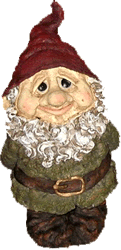The Basics of Rose Pruning"Bill, I live in the sandhills of North Carolina. Should I start pruning my Roses now? Also how much should I take off? We have had an exceptionally mild winter. What do you suggest about the hydrangea? I did not prune ours in February as I normally would because of the odd weather. It is starting to bud out. Thanks! ESO" |
||||
|
||||
Remove all criss-crossed stems, and cut the remaining stems at various lengths leaving the center stems longer than the outer ones to form the desired shaped plant. Pruning the canes at different lengths will help to insure continuous blooming. How to Prune Rambler Type RosessRamblers grow a completely new set of blooming canes each year.The flowers are formed on year old canes, which should be cut back to within 2-3 inches of their base when they are finished blooming. This will allow the plant to devote its energy into producing the new shoots that will bear the next years flowers. How to Prune Climbing RosesClimbing Roses resent hard pruning.In early spring, remove any dead or diseased canes. Other than that you should only do light pruning for shape. Climbers should be pruned and trained to grow in a more fan shaped pattern rather than for upward growth. If it becomes necessary, the canes can be shortened at any time of the year. Pruning Miniature RosesMiniature Roses need very little pruning.Just prune them to the desired shape. Cut any new shoots which have emerged from below the soil line to about 1/2 their length. When the branches finish flowering, cut them back to a new outward facing bud. Pruning HydrangeasFrench Hydrangeas, Hydrangea macrophylla, blooms from the previous years buds, and should be pruned in the summer when the blooms have faded. Most hydrangeas bloom on new wood so if you decide to cut your plant back now, I would think that it will send new buds again, but I can't promise you that.Since it isn't necessary to prune hydrangeas every year, I think that if it were my plant, I would snip any dead branches, and possibly do a little shaping, but otherwise let the plant go ahead on its own schedule.
|
||||
Search The Garden Helper:

